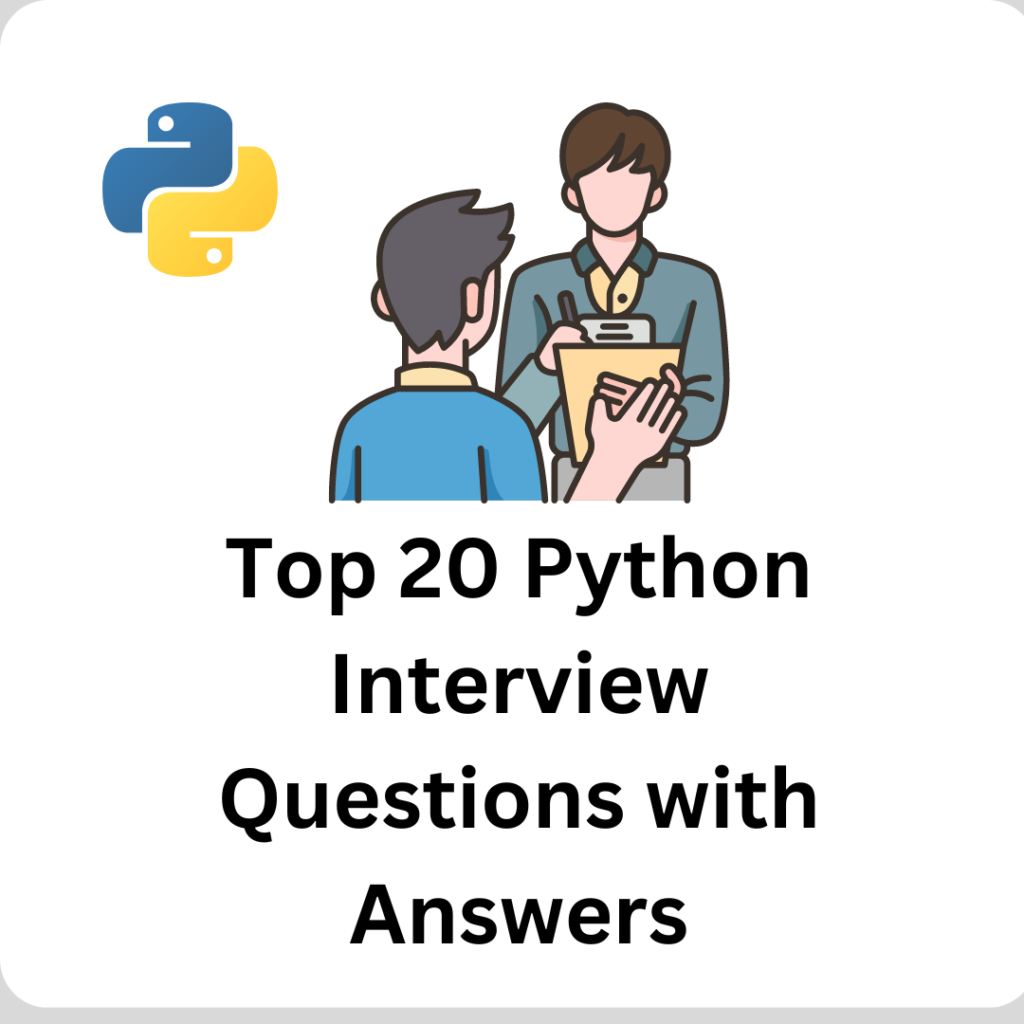Python Interview Questions
Key features of Python include simplicity, readability, versatility, extensive libraries, dynamic typing, automatic memory management, and support for multiple programming paradigms (procedural, object-oriented, and functional)
Key features of Python include simplicity, readability, versatility, extensive libraries, dynamic typing, automatic memory management, and support for multiple programming paradigms (procedural, object-oriented, and functional)
Python is a high-level programming language that supports both programming and scripting. It is often referred to as a “general-purpose language” due to its versatility and ability to be used for various applications, including web development, data science, artificial intelligence, automation, and more.
Python is interpreted, meaning its code is executed line by line by an interpreter at runtime. It doesn’t require compilation into machine code, allowing for dynamic typing and platform independence.
PEP 8 (Python Enhancement Proposal 8) is a style guide for writing Python code. It provides conventions for formatting, naming, and organizing code to enhance readability and maintainability
Benefits of using Python include simplicity, readability, versatility, extensive libraries, dynamic typing, automatic memory management, cross-platform compatibility, community support, and adoption in diverse fields like web development, data science, Al, and automation.

Python namespaces are mappings from names to objects, organizing variables, functions, etc. Local, enclosing, global, and built-in namespaces help manage names and avoid conflicts in a program.
In Python, decorators are a powerful and flexible way to modify or extend the behavior of functions or methods without changing their code. They use the @decorator syntax and are applied above the function definition. Decorators are often used for tasks like logging, timing, authentication, or modifying the return value of a function.
List comprehensions create lists by applying expressions to iterable items. Dict comprehensions do the same for dictionaries. Both offer concise syntax for generating data structures in Python.
The common built-in data types in Python include integers (int), floating-point numbers (float), strings (str), booleans (bool), lists (list), tuples (tuple), dictionaries (dict), sets (set), and the special type NoneType.
py files: These are Python source code files. They contain human-readable code that you write and can be directly executed by the Python interpreter. pyc files: These are compiled Python files. When a.py file is imported, Python compiles it into bytecode (a lower-level representation) and saves it as a.pyc file. This bytecode can be executed faster than the original source code and is platform-independent. The.pyc files are created to improve the startup time of Python programs.
Slicing in Python extracts portions of a sequence using start:stop:step notation. It allows selecting elements by index, defining intervals, and reversing sequences efficiently.
Keywords in Python are reserved words that have specific meanings and cannot be used as identifiers (variable names, function names, etc.). Examples include if, else, for, while, def, class, True, False, and None.
Literals are direct representations of data values in Python code. Numeric literals include integers, floats, and complexes. String literals use quotes. Booleans are True or False.
In pandas, you can combine DataFrames using functions like concat(), merge(), and join(). concat() is used for simple concatenation, while merge() and join() are for merging based on key columns.
As of my last knowledge update in January 2022, I don’t have specific details about Python 3.9.0.0 features. However, Python releases usually introduce improvements in performance, new syntax features, and library enhancements. For the latest features, check the official Python release notes on the Python website or documentation.
Python uses automatic memory management with a private heap. It employs reference counting and a cyclic garbage collector to reclaim unused memory. Memory pools and allocation strategies optimize performance.
A namespace in Python is a mapping from names to objects, providing a way to organize and manage identifiers (variables, functions, classes). It helps avoid naming conflicts and supports modular programming.


Leave a Reply